Yazd Province
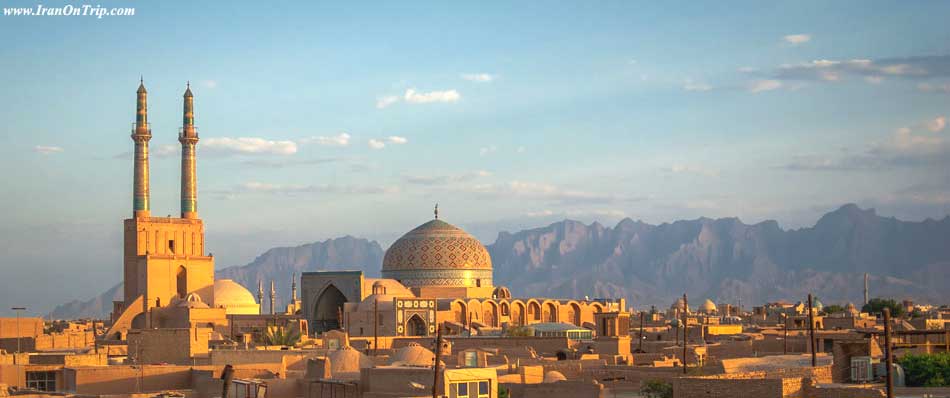
Yazd, Bride of Desert
The city of Yazd first mention in historic records predate it back to around 3000 years B.C. when it was related to by the name of Ysatis, and was then part of the domain of Medes, an ancient settler of Iran. The city of Yazd is located in the eastern part of central Iran situated on the high, desert plateau that forms much of the country. Amidst the immense desert, Yazd retains its sterling of old in religion, traditions and architecture. In the course of history due to its distance from important capitals and its harsh natural surrounding, Yazd remained immune to major troops' movements and destruction from wars, therefore it kept many of its traditions, city forms and architecture until recent times. During the invasion of Genghis Khan in the early 1200 A.D. Yazd Read more
Yazd at a Glance

The word Yazd means, feast and worship, the city of Yazd has resisted the modern urbanization changes and maintained its traditional structure. The geographical features of this region have made people developed special architectural styles. For this reason, in the older part of the city most houses are built of mud-bricks and have domed roofs. These materials served as insulation preventing heat from passing through.With an area of 131,575 km Yazd is the fourth largest province in Iran located in the central plateau on the rim of the vast desert of Kavir-e-Lut.The province consists of 11 towns, 23 townships and 51 villages, bordering Semnan province to the northwest, Esfahan province in the west, Fars province in the south and southwest, South Khorasan province to the east, Khorasan Razavi province in the northeast and Kerman province in the east and southeast.Read more
History of Yazd
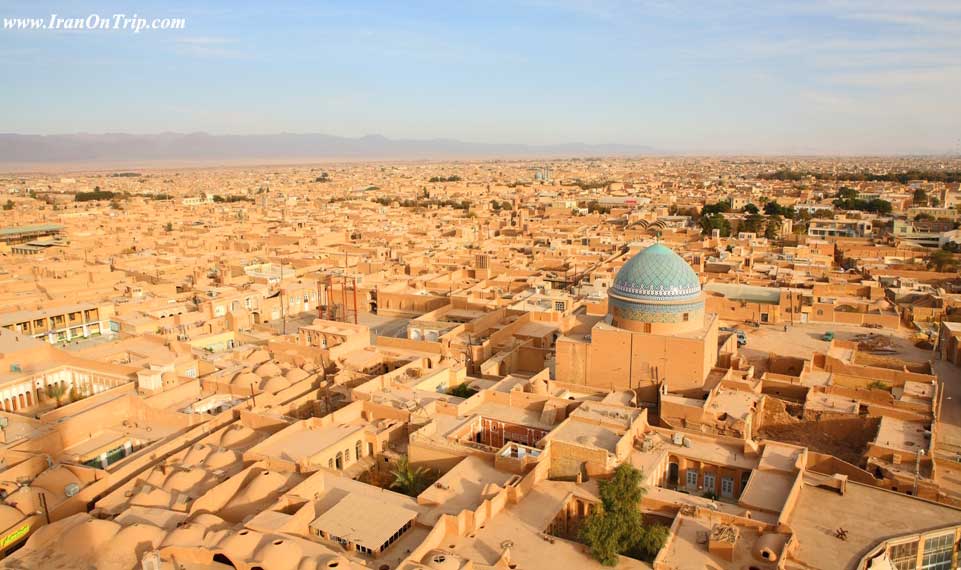
Originally, Yazd was called Issatis at the time of Median Empire when it emerged. The city prospered under Sassanians when it was a center of the followers of Zoroastrian faith. Because of its remoteness from central Iran and populated areas, it has escaped devastating assaults of the foreign invaders like Chengiz Khan. Instead, it has turned into a safe place for the migrants who were looking for another city to relocate. However, like many other desert towns, the inhabitants of this city had to protect themselves by building high walls around the city 900 years ago and reconstruct it after each attack.Yazd became the capital city of Muzaffarid dynasty who ruled there in 14th century. They fled to Yazd after Khorasan, their original birthplace was attacked by Mongols. Some of the rulers stayed in Meybod, another town in this province to the north of Yazd. During late 18th century and simultaneous with the rise of Qajars, Bakhtiari khans were ruling in Yazd.There was not much improvements during Safavids in Yazd. On the contrary, the inhabitants saw the deterioration of urban infrastructure. However, under Qajars the city started to thrive as a result of the extensive trading demands. Therefore, the city grew physically:
new residential areas were annexed to the previous ones,
facilities like baths were built for the people,
more areas were added to the bazaar,Read more
Marco Polo and Yazd

Here is Marco Polo writing about Yazd:
Yasdi also is properly in Persia; it is a good and noble city, and has a great amount of trade. They weave there quantities of a certain silk tissue known as Yasdi, which merchants carry into many quarters to dispose of. The people are worshipers of Mohammad The holy prophet of Islam .Read more
General Information about Yazd
.jpg)
Travel to Iran to Visit Yazd Tourist Attractions
Yazd is located almost 270 km south east of Isfahan and with a growing population of approximately 560,000 inhabitants, it attracts more people to live in this city. The altitude of Yazd is approximately 1210m above sea level. There are high mountains to the south of the city and Taft area where lots of Yazdi people take short trips to spend hot summer days or weekends in this moderate area. The city itself is very hot and dry in summer due to its location which is between two main deserts of Dasht-e Kavir and the Kavir-e-Lut.Read more
Visit Yazd Tourist Attractions
Yazd is one of the most well-known desert cities of Iran that is famous for several reasons. Many Iranians and non-Iranians like to visit Yazd to see the vernacular architecture found in desert areas. It is known as the city of tourist attractions like wind catchers, Zoroastrians, Termeh (traditional brocade), silk weaving, baqlava and qotab (local sweets), etc.A trip to Yazd will make you familiar with life in desert towns and how people cope with it. You learn about underground water supplement system (Yariz or qanat) for which Iranians are well-known. The water reservoirs, icehouses, wind catchers and pigeon towers make it worthwhile to have a visit to Yazd and explore the uniqueness of this ancient city of Iran.
Visit Yazd Attractions inside the City
Every year, lots of international travelers visit Yazd tourist attractions inside the city and spend at least one full day exploring the beauty of its local architecture.
Yazd Friday Mosque: This is the grand congregational mosque of 14th century built by well-known Yazdi architects. It has the tallest minarets in Iran.
Mirchaqmaq Tekieh: This is the mourning structure used by Shiite mourners who commemorate the martyrdom of Imam Hossein, Fatima, etc by sitting in its cells and watching the religious passion play and the mourners’ parade in front of the structure.Read more
Visit Yazd Attractions outside the City
The people who visit Yazd, take a trip outside the city to explore other tourist attractions outside the city. Here’s a list of them:
Narin Qaleh (at Meybod): This fortress is said to have been built approximately 5000 years ago, but it has certainly existed at the time of the Median empire. Sassanian bricks can be found it it and Meybod’s governor used to live here.
Shah Abbasy Caravansary (at Meybod): In Safavid era, Shah Abbas started building several caravansaries to promote trade and business. This spacious one used to be at the side of the old town of Meybod.Read more
Historical Sights of Yazd
1)-Jame Mosque of Yazd
2)-Mir Chaqmaq Mosque
3)-Atashkadeh (Fire Temple)
4)-Alexander's Prison
5)-Windcatchers
6)-Meybod Ice Chamber
7)-Yazd Qanat
8)-Amir Chakhmagh Complex
9)-Arab - Ha - House
10)-Dowlatabad Garden
11)-Yazd Water Museum
12)-Ashkaft Yazdan Cave
13)-Yazd Lari House
14)-Dakhma(Tower of Silence)
15)-Yazd Yakhchal
16)-Mullah Ismall Mosque
17)-Ali ibn Sahl Rabban al-Tabari
18)-Sarv-e Abar Kuh ( cypress of Abar-Kuh )
19)-The Fire- temple of Chak Chak
20)-The Mausoleum of Seyed Roknaddin
21)-The Towers of Silence (Dakhmeh or Qal'eh-ye Khamushan)
=====================================
1)Jame Mosque of Yazd
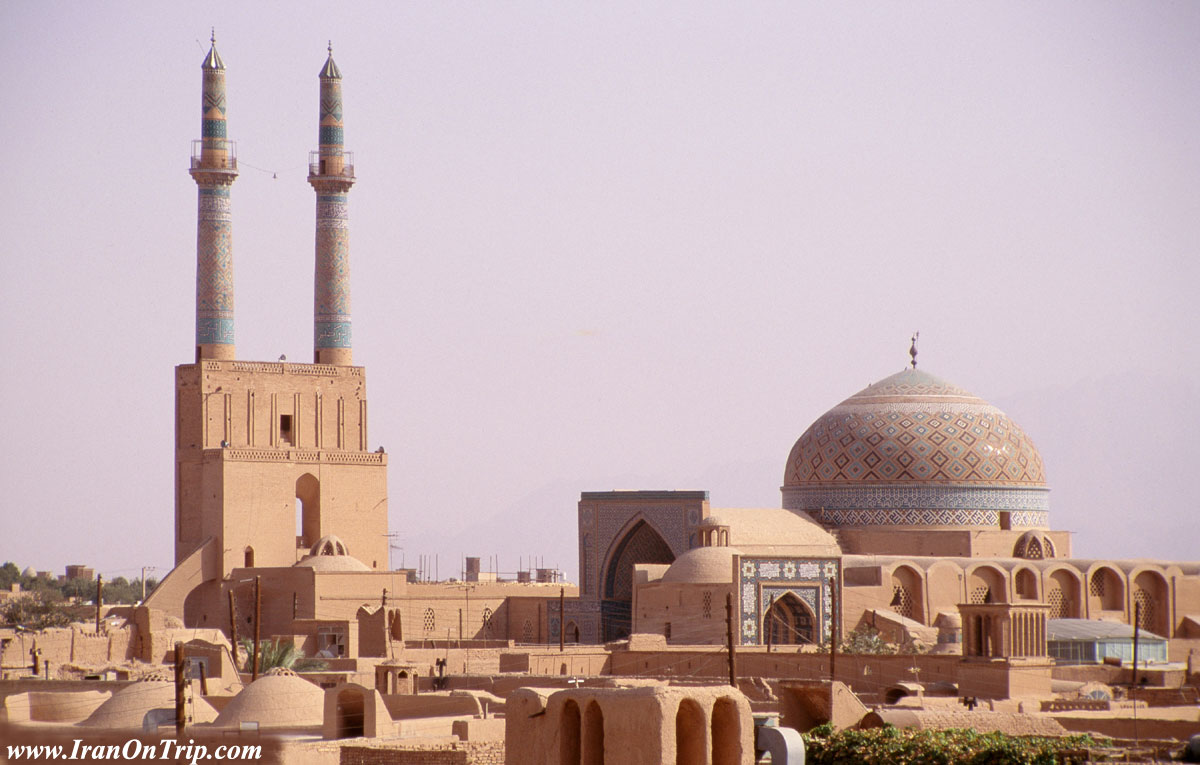
The 12th century mosque is still in use today. It was first built under /Ala'oddoleh Garshasb/ of the Al-e Bouyeh dynasty. The mosque was largely rebuilt between1324CE and 1365CE, and is one of the outstanding 14th century buildings of Iran. The mosque is a fine specimen of the Azari style of Persian architecture . The mosque is crowned by a pair of minarets , the highest in Persia, and the portal's facade is decorated from top to bottom in dazzling tile work, predominantly blue in colour.Within is a long arcaded courtyard where, behind a deep-set south-east iwan , is a sanctuary chamber(shabestan ). This chamber, under a squat tiled dome, is exquisitely decorated with faience mosaic:its tall faience Mihrab , dated 1365CE, is one of the finest of its kindin existence. The 800 year old Masjed-i Jame' mosque of Yazd has one of the tallest minarets among Persian mosques.Read more
2)Mir Chaqmaq Mosque

The mosque of Mir Chaqmaq, also referred to as the Masjid-e Nau, was one of the first constructions in a larger institutional complex consisting of a madrasa (theological school), khanqah (a hostel for sufis or dervishes), caravanserai (travelers inn), qanat and ab anbars (subterranean canal and water cistern), public baths, maidan or public square and bazaar sharing the name. It was built outside Yazd's fourteenth century city walls in the Dehkok quarter, which has since transformed from a suburban garden to a dense residential and commercial district. Today only the mosque, maidan and a few hydraulic structures exist from the original complex. The mosque is noted for the excellence of decorative craftsmanship on its marble mihrab (niche marking the direction of prayer in a mosque) and its portal's tile mosaic calligraphic panels.Read more
3)Atashkadeh of Yazd(Fire Temple)

The Yazd Atashkadeh is located on Kashani Street in Yazd province. It is considered a holy Zoroastrian temple which is home to Atash Bahram (Victorious Fire). The building was constructed in 1934 under the supervision of Jamshid Amanat on a piece of land donated by the Amanat brothers, and funded by various sources. The Yazd Atashkadeh is said to be Iran's only temple housing Atash Bahram. The name Atash Bahram more accurately defines the grade of consecrated fire in the temple, than it does the temple. It involves the gathering of different types of fire gathered from 16 different sources, including lightning, fire from a cremation pyre, fire from trades where a furnace is operated, and fires from the hearths. Each of the 16 fires is then subject to a purification ritual before it joins the others. Thirty two priests are required for the consecration ceremony, which can take up to a year to complete. However, the name Atash Bahram has now come to mean the temple that houses the highest grade of fire used in Zoroastrianism.Read more
4)Yazd Alexander's Prison
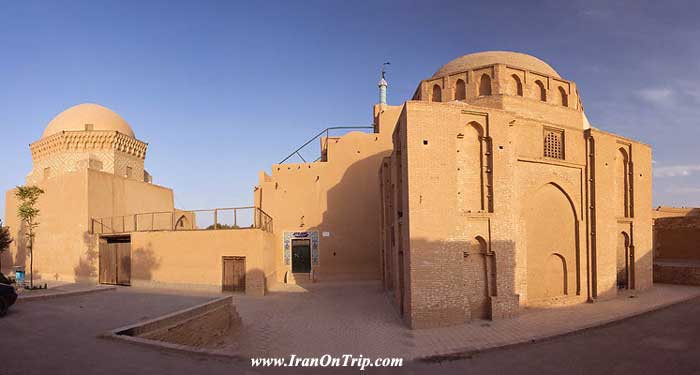
Eskandar Prison is an ancient domed structure apparently known by this name as a result of a reference in a Hafez poem. The complex contains a deep, circular, brick-lined pit almost 10 meters in diameter resembling an ancient dungeon found at the heart of the old. There is also a well and some nooks in the courtyard. It is alleged by some to have been built by Alexander to hold his captives during his conquest of Persia and alleged by others to have been built by the Persians to hold Alexander himself. Whatever the true story, the complete complex itself is almost certainly a later construction.Read more
5)Windcatchers of Yazd(Wind Trappers or Badgir)
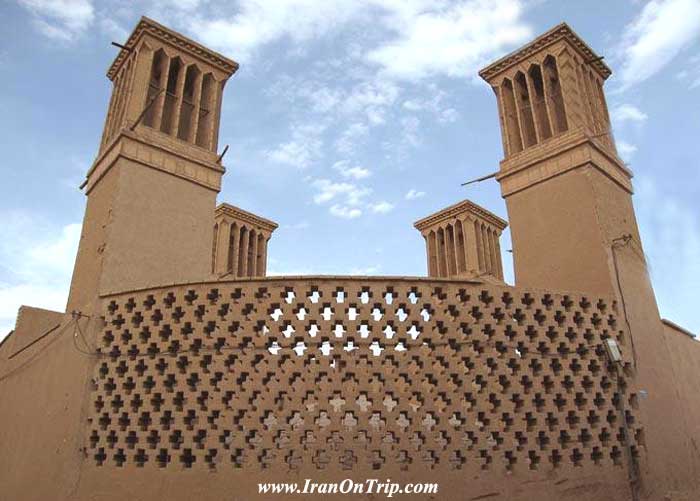
A windcatcher is a traditional Persian architectural device used for many centuries to create natural ventilation in buildings. It is not known who first invented the windcatcher, but it still can be seen in many countries today. Windcatchers come in various designs, such as the uni-directional, bi-directional, and multi-directional. more
6)Meybod Ice Chamber
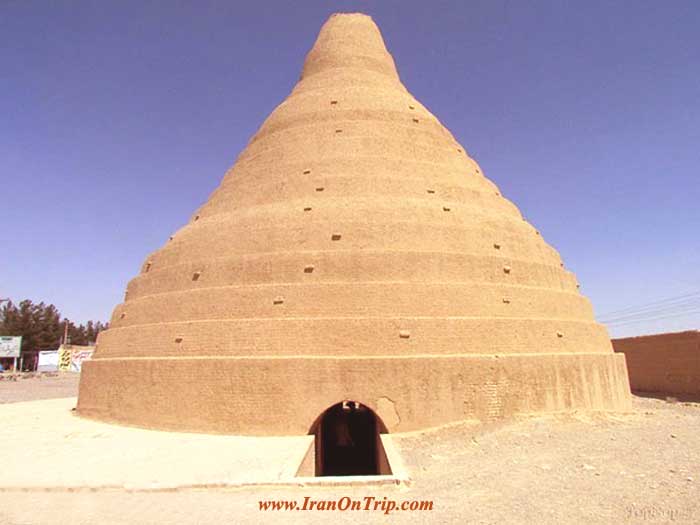
A yakhchal or ice chamber is an ancient natural refrigerator which was mainly built and used in Iran to store ice, but sometimes was utilized to store food as well. In the summer, people living in nearby villages used to satisfy their ice needs from such structures. The subterranean space coupled with the thick heat-resistant construction material kept the outside heat from reaching the interior space all year long.Read more
7)Yazd Qanats
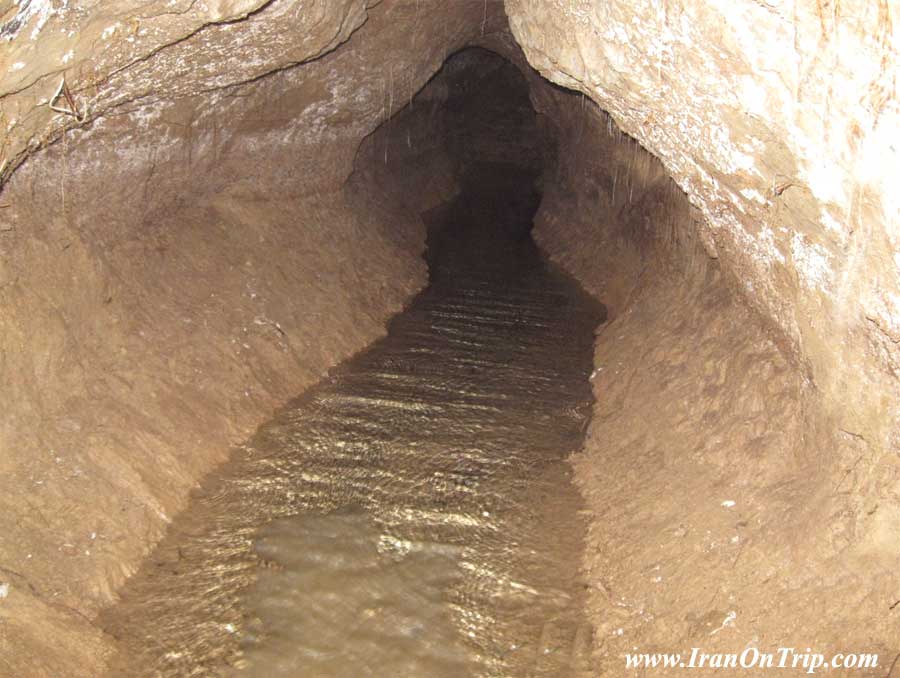
A qanāt (Arabic: قناة, Persian: قنات) is one of a series of well-like vertical shafts, connected by gently sloping tunnels. Qanāts create a reliable supply of water for human settlements and irrigation in hot, arid, and semi-arid climates.The qanat technology is known to have been developed by the Persian people sometime in the early 1st millennium BC and spread from there slowly westward and eastward.The value of the qanat is directly related to the quality, volume, and regularity of the water flow. Much of the population of Iran and other arid countries in Asia and North Africa historically depended upon the water from qanats; the areas of population corresponded closely to the areas where qanats are possible. Although a qanat was expensive to construct, its long-term value to the community, and thereby to the group that invested in building and maintaining it, was substantial.Read more
8)Yazd Amir Chakhmagh Complex

In order to populate Yazd and with the cooperation of his wife, Fatemeh Khatoun, Amir Jalaledin Chakhmagh - one of the Shahrokh Teymuri's commanders and the governor of Yazd - has founded a complex including Tekieh (religious theatre), square, bath, caravansaries, monastery, pastry house, water well and, more important of all, Amir Chakhmagh mosque Read more
9)Arab - Ha - House
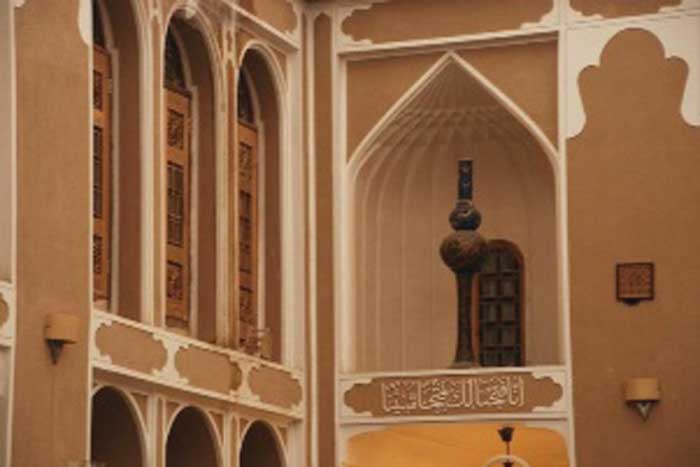
This complex made up of one big and one small house is located in Sar Qadamgah in the Fahadan vicinity near the Chehel Mehrab Mosque. It belongs to Mirza Ahmad Arab. The smaller house of this complex has been built by Ostad Ali Akbar, son of late Ostad Baqer in 1298 AH.Read more
10)Yazd Dowlatabad Garden
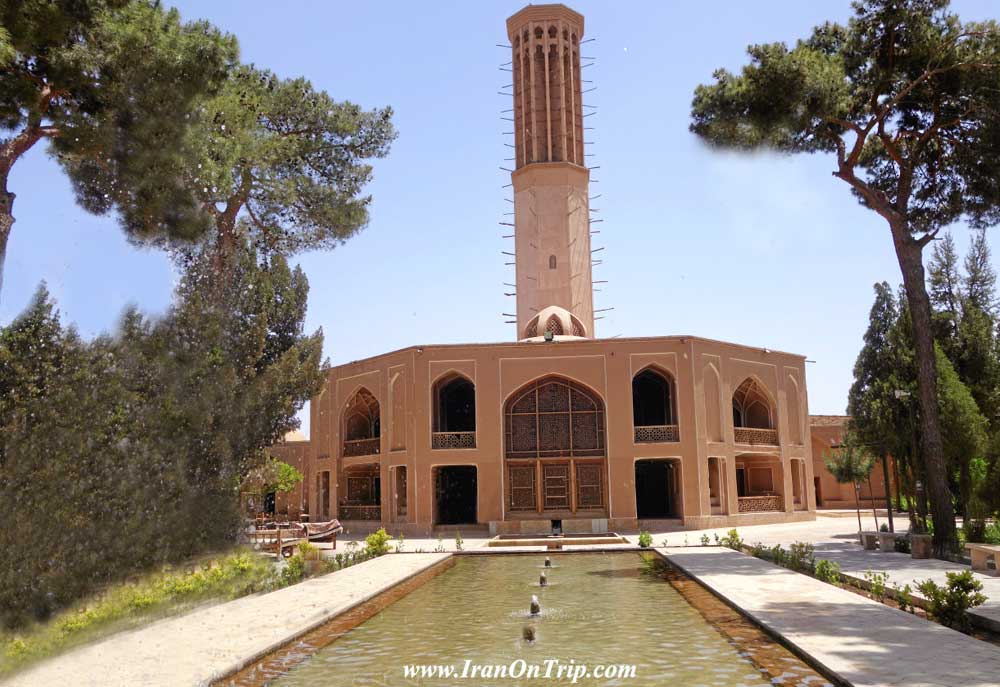
Dowlatabad Garden located in Yazd, central Iran, is a Persian architecture jewels.
The Garden is an authentic Iranian garden that annually attracts thousands of domestic and foreign tourists.This is a complex built according to the original Iranian architectural style and consists of a large garden and some buildings.Looking at the garden and the main entrance of the garden, you will see the long pool in the shade of the tall cypress trees leading to the main entrance. On the way to the mansion, there are beautiful grapes and pomegranates trees behind those tall trees.Read more
11)Yazd Water Museum

Yazd is a city that essentially blossomed out of the desert, and one of the major issues was getting water, so much so that it has a museum dedicated to explaining how it was obtained. To some of visitors this question may come to their head that why they wouldn’t built the city in a more strategic location.The answer is because the location is magical. I don’t know what it is about Yazd, but it’s just got good energy.A visit to this museum will explain all about qanat, an elaborate tunnel system used to extract groundwater. The tunnels were hand-hug and just big enough to fit one person.Read more
12)Yazd Ashkaft Yazdan Cave

This cave is located near the village ‘Hafthar’ in a high mountain called Shegeft. Due to its impassable path, in 9th century AD, and the early arrival of Muslims to Iran, Zoroastrians, in order to preserve their sacred fire, they moved it to cave, where it was kept for 30 years.Read more
13)Yazd Lari House
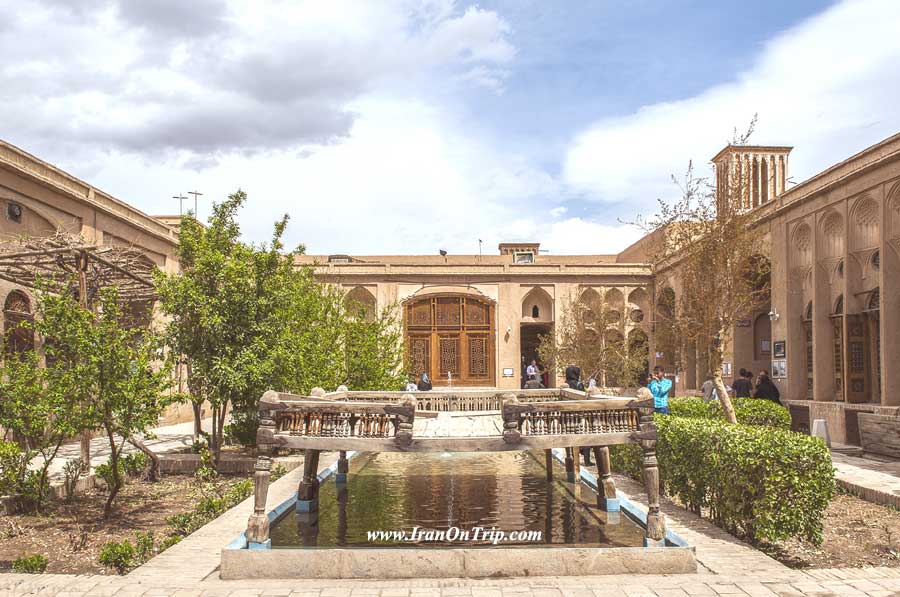
This house was built in 1286 AH.by Hadji Mohammad Ebrahim Lari. They used to use this building as a house for Darvishes of the Ne'mat-o-Allahi sect in the past. Its door, windows, sash windows and painted rooms decorated with mirrors, caused it to be one of the beautiful and splendid aristocratic houses of the thirteenth century AH.Read more
14)Yazd Dakhma(Tower of Silence)
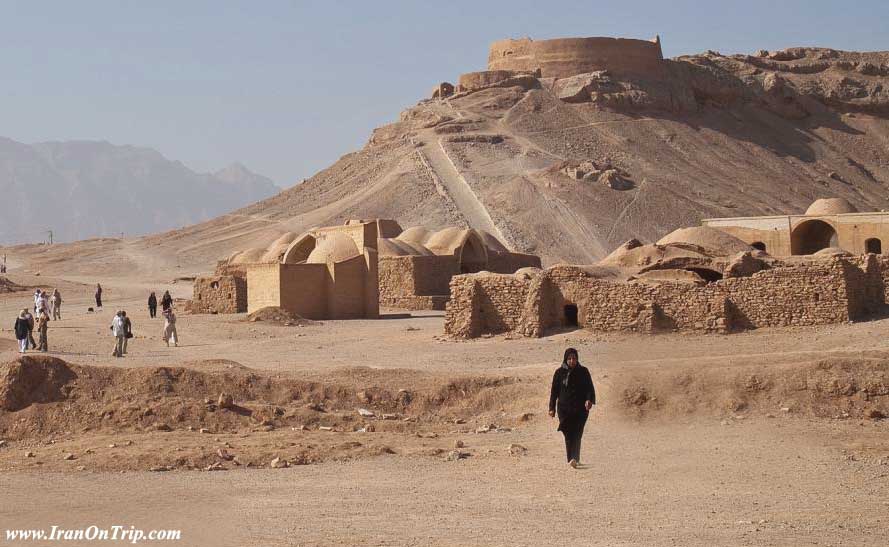
A Dakhma (Persian: دخمه) also known as "Cheel Ghar" in Hindi and "Tower of Silence" in English, is a circular, raised structure used by Zoroastrians for exposure of the dead, particularly to scavenging birds.The type of construction is not specified by the name. The common dakhma or dokhma (from Middle Persian dakhmag) originally denoted any place for the dead. Similarly, in the medieval texts of Zoroastrian tradition, the word astodan appears, but today that word denotes an ossuary. In the Iranian provinces of Yazd and Read more
15)Yazd Yakhchal
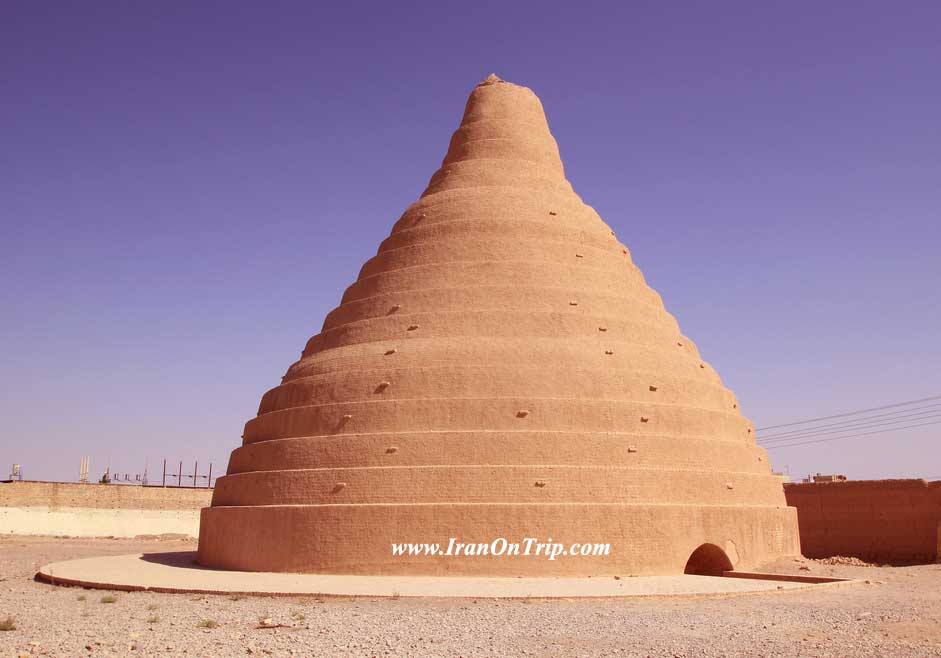
Yakhchāl (Persian: یخچال "ice pit"; yakh meaning "ice" and chāl meaning "pit") is an ancient type of evaporative cooler. Above ground, the structure had a domed shape, but had a subterranean storage space; it was often used to store ice, but sometimes was used to store food as well. The subterranean space coupled with the thick heat-resistant construction material insulated the storage space year round. These structures were mainly built and used in Persia. Many that were built hundreds of years ago remain standing.Read more
.....
.....
.....

.jpg)



























